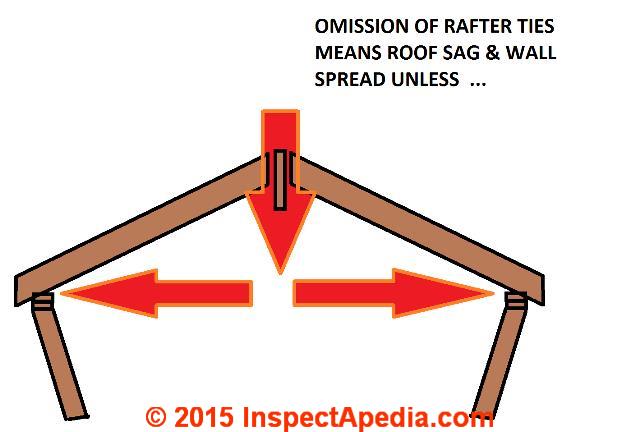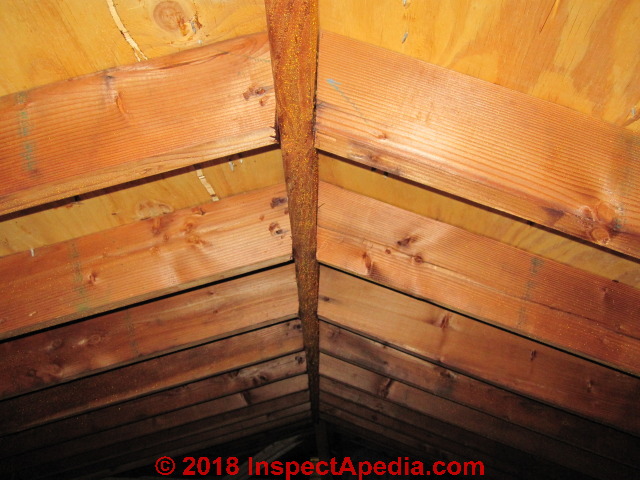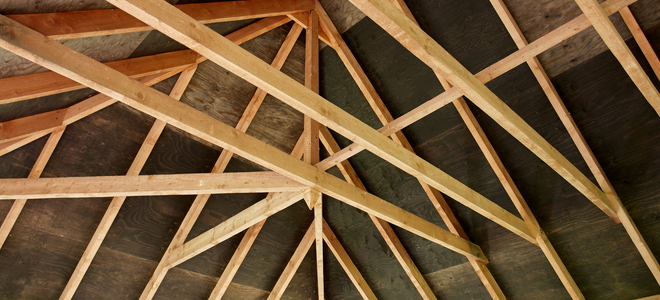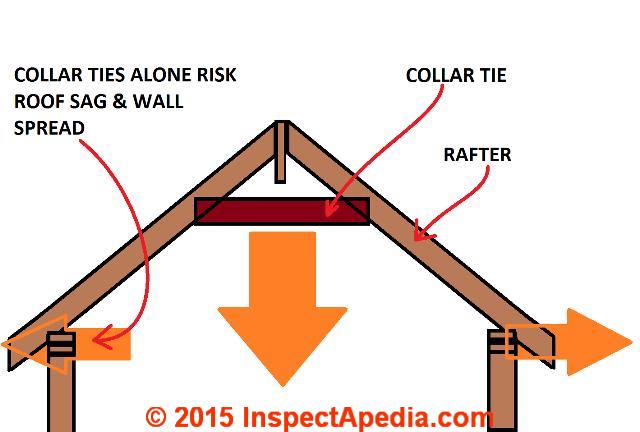A ridge that droops in the middle forming that unintentional western design feature likely is due to undersized rafters and or missing or inadequate internal bracing rafter or collar ties.
Roof sagging due to improper wall support.
Roofs sag due to lack of structural support for their load which refers to anything they are expected to bear.
Sagging ceiling could be an indication of framing issues some of which could be related to the roof.
Keep your attic well insulated and ventilated to prevent ice dams which can cause roof leaks.
The home may not be designed to support the weight of this extra roofing material and it will sag.
Without the proper support of rafter ties or a structural ridge a typical gable or sloped roof will sag downwards while pushing the building walls outwards towards a catastrophe.
A roof rake can help you deal with lighter snowfall.
Should the bottom cord of one or more trusses be sagging or damaged it may be reflected in a sagging ceiling or if the roof is over loaded to heavy then the downward pressure may cause the sagging.
Failures of other supporting systems including the walls and house foundation.
A sagging roof can come in one of a few classic forms each with its own cause.
If the framing is sound and problems are not found elsewhere but the roof still sags the problem might have originated because of poor installation of the plywood sheathing or shingles.
This happens when proper structural support was not installed to carry the weight that the removed wall was holding.
It includes snow and ice the roofing materials and the sheathing and even the wind.
If a wall is removed between two rooms or even moved to enlarge a room then the ceiling may sag.
Improper roof design or construction structural damage to the roof wall and foundation failure and environmental factors like strong winds or heavy snowfall are some of the issues that can lead to sagging.
Warning signs that a load bearing wall has been removed.
Weight related sagging can also be caused by design flaws that leave the roof unable to support its own weight.
Additionally if your roofer has used material that is much heavier than your previous roof it can sag for the same reason.















































